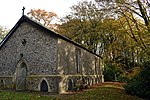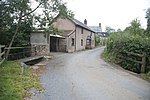Dunkeswell
1201 establishments in England1539 disestablishments in EnglandChristian monasteries established in the 13th centuryCistercian monasteries in EnglandMonasteries in Devon ... and 2 more
Religious organizations established in the 1200sVillages in Devon

Dunkeswell is a village and civil parish in East Devon, England, located about 5 miles (8.0 km) north of the town of Honiton. At the 2001 census, the parish had a population of 1,553, reducing to 1,361 at the 2011 Census. There is an electoral ward with the same name whose population at the above census was 2,000. The parish is surrounded, clockwise from the north, by the parishes of Hemyock, Luppitt, Combe Raleigh, Awliscombe, Broadhembury and Sheldon.
Excerpt from the Wikipedia article Dunkeswell (License: CC BY-SA 3.0, Authors, Images).Dunkeswell
East Devon
Geographical coordinates (GPS) Address Nearby Places Show on map
Geographical coordinates (GPS)
| Latitude | Longitude |
|---|---|
| N 50.863 ° | E -3.221 ° |
Address
EX14 4QZ East Devon
England, United Kingdom
Open on Google Maps










